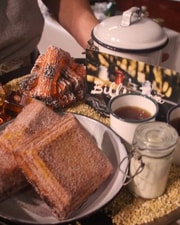Question 1: What is the term for the process by which sediments are compacted and cemented together to form solid rock?
Question 2: Who discovered the tomb of Tutankhamun, the ancient Egyptian pharaoh?
Howard Carter, a British archaeologist, discovered the tomb of Tutankhamun in 1922. The discovery was significant because the tomb was largely intact, providing a wealth of artifacts and information about ancient Egyptian burial customs.
Question 3: Where did the bikini swimsuit get its name?
The bikini swimsuit was named after Bikini Atoll, a coral reef in the Marshall Islands where the United States conducted nuclear weapons tests in the 1940s and 1950s. French designer Louis Réard introduced the revealing two-piece swimsuit just days after the first nuclear tests at the atoll, and he named it the "bikini" because he believed it would create a shock similar to that of the atomic bomb.
Question 4: When were high heels first invented?
High heels were first invented in the 16th century. Catherine de' Medici, wife of King Henry II of France, is often credited with introducing high heels as a fashion statement in 1533 at the age of 14. At the time, they were a signal of wealth and status.
Question 5: If the pH level of a substance is low, what does this indicate about the substance?
The pH scale ranges from 0 to 14 and measures how acidic or alkaline a substance is. A pH below 7 indicates acidity, with lower values being more acidic. Acids release hydrogen ions (H+) in water, which lowers the pH. Some common examples of acids include vinegar, lemon juice, and battery acid.
Question 6: Why does the Moon always show the same face to the Earth?
The Moon is tidally locked to Earth, meaning it rotates about its axis in about the same time it takes to orbit Earth. This results in it nearly always showing the same face to Earth. The Moon does actually rotate, just very slowly and in sync with its orbit.
Question 7: Which famous artist is known for painting the ceiling of the Sistine Chapel?
Michelangelo painted the ceiling of the Sistine Chapel between 1508 and 1512. The iconic painting depicts various scenes from the Book of Genesis, including the famous "Creation of Adam" fresco.
Question 8: Which of the following is NOT one of the Five Pillars of Islam?
Fasting during Ramadan is actually one of the Five Pillars of Islam, along with the Declaration of Faith (Shahada), Prayer (Salah), Giving to Charity (Zakat), and Pilgrimage to Mecca (Hajj). These five practices are considered mandatory for all Muslims who are able to perform them.
Question 9: If an author has written under a fake name, what is the term for that fake name?
A pseudonym is a fictitious name used by an author as an alternative to their real name. Some famous examples include Samuel Clemens writing as Mark Twain, and Mary Ann Evans writing as George Eliot. "Nom de plume" is another term that means the same thing as pseudonym.
Question 10: In what sport would you use a shuttlecock?
A shuttlecock, also known as a birdie, is a high-drag projectile used in the sport of badminton. It is made of feathers or synthetic materials embedded into a rounded cork base.






Lithification is the process that turns loose sediment into solid sedimentary rock through compaction and cementation. Heat and pressure over a long period of time cause the individual sediment grains to compress and bind together, forming a consolidated rock.